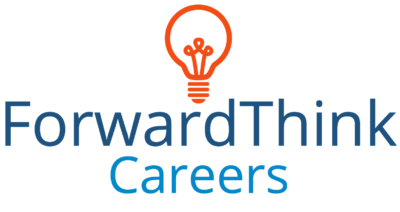

7 seconds. That’s the purported average length of time a recruiter spends looking at your resume. As a former recruiter, I’d put it somewhere between 10 and 30 seconds, but the fact of the matter is…recruiters are very quick assessors. They have to be! With hundreds of resumes they may receive per position, they can’t afford to dilly dally on a single resume.
So how to do make your resume more of the new-hit-Netflix-original-series variety? (As opposed to being tossed into the old-reruns-of-Dawson’s-Creek pile?)
Here are some helpful do’s and don’ts that can transform your document from ho-hum to red-carpet ready:
#1 – DO Say Goodbye to an Objective Statement…and Hello to a Professional Summary
Objective statements used to be a resume must-have…until recruiters realized they didn’t communicate anything of substance. Take this one for example: “Seeking a rewarding career in market research with opportunities for advancement.” Huh? It sure doesn’t help the recruiter determine fit for the job, right? Buh-bye.
While an objective statement put too much emphasis on the desires of the candidate, a professional summary allows you to showcase your unique fit for the role. It’s wise to start with a one or two-sentence branding statement that includes your general title, industry, and a few areas of expertise. From there you can create a few columns of skills sets (including technical skills) as they relate to the job description.
And if you have a few key accomplishments that you want to highlight, this is a good spot for them. But keep in mind — your professional summary should only take up the top third of the page, so only include what’s critical.
#2 – DON’T Merely List Job Duties
When it comes to writing bullet points for each position, just saying you did something isn’t quite enough. Recruiters want to know the specifics and the outcome. They want to see accomplishment statements, not just job responsibilities. Take a look at the difference between these two bullet points:
• Managed social media ad campaigns
• Managed twelve Facebook ad campaigns, increasing new leads by 30%
The second bullet point gives the recruiter a clearer sense of what you’re capable of. While it can be challenging to include metrics in every bullet point, strive to paint a detailed picture of your achievements.
#3 – DO Tailor Your Resume to the Job Description
Sending off the same resume for every job is a major league no-no. While it feels efficient, it might prevent your resume from getting through the applicant tracking system. That’s because resumes are ranked based on keyword matching.
How do you find the right keywords?
Scour the job description for the hard skills that get repeated throughout the responsibilities and requirements sections. (Ignore terms like “excellent communicator” or “detail-oriented.” Stuffing your resume with these soft skills won’t help you.)
Then find a way to (truthfully) incorporate those hard skills into your professional summary and accomplishments statements. A resume tool like jobscan.co can help determine if your resume includes enough of the keywords from the job description.
And be honest with yourself. If you don’t possess at least 80% of the required skills and experience, it’s probably not worth applying for the job.
#4 – DON’T Include Everything But the Kitchen Sink
Dovetailing on the last point, when it comes to your resume, more is not necessarily better. Just like it’s important to include keywords that pertain to the job description, you’ll want to remove bullet points that aren’t relevant, especially if they contain duties you no longer want to be doing.
When I was coaching an administrative assistant client who was trying to move into project coordinator roles, I had her remove all bullet points that mentioned filing, photocopying, and answering phones — and instead highlight her project-based accomplishments.
What if you have an entire position on your resume that isn’t relevant to the roles you’re now targeting?
Job seekers often worry about removing positions, because it’ll create a gap in work history — and that’s definitely understandable. A better option is to create a section below Professional Experience titled Additional Experience. There you can just list the title, company, dates and location of positions that don’t fit your current career path.
Also, there’s usually no need list work experience beyond 15 years. Most employers won’t consider those skills relevant today.
#5 – DO Make Your Resume Easy on the Eyes
Are recruiters having to up their eyeglass prescription in order to read your resume? Show them a little love by using 11-point font or greater, and include plenty of white space. Remember, this document needs to be skimmable.
That means you can tell the one-page resume rule, “begone!” That’s right, unless you’re a college grad or only have a few years of work experience, you can go beyond one page. But extend judiciously. As I mentioned in #4, only include relevant information as it pertains to the job description.
Another note — applicant tracking systems, depending how sophisticated they are, might struggle to read tables, text boxes, headers, footers, and underlined words. So keep that in mind when formatting your resume. And lastly…
#6 – DON’T Overthink Your Resume
All this talk about resumes may lead you to believe it’s the most important tool in your job search. But in reality, it just isn’t. That’s because applying for jobs online is one of the least effective ways to land a job. Targeting companies of interest and networking your way into those companies is still king. When you’ve built relationships with decision-makers and have effectively demonstrated how you can bring success to their team, your resume may end up functioning as a mere formality.
So instead of spending hours tweaking your resume to death, put that time into formulating a networking plan. Get active on LinkedIn and other social media and start reaching out to hiring managers directly. You may just land the role of your dreams! (Cue audience cheers…)



